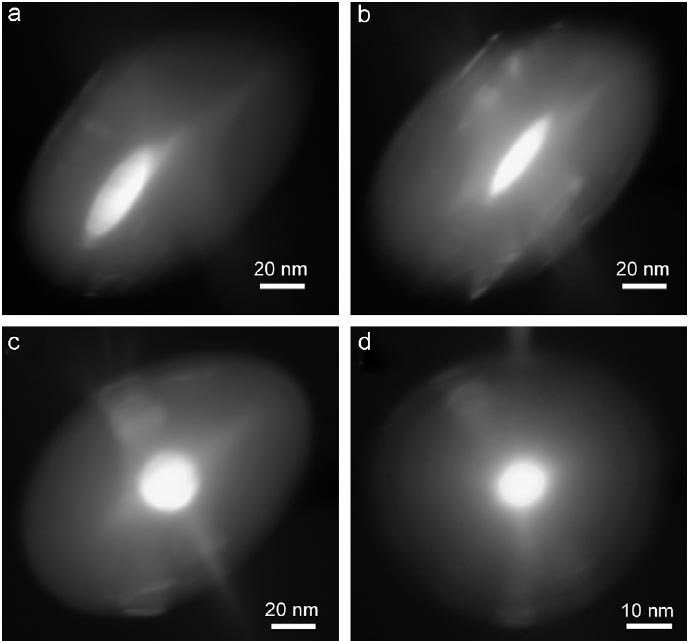=================================================================================
The caustic curve in TEM appears elliptical when the astigmatism of the objective lens (OL) exists. Therefore, by rounding the caustic curve the OL astigmatism can be corrected. The advantages of this method are: A) Applicable to any materials including magnetic/crystalline/thick materials, and B) Coma-free alignment can be performed at the same time.
Figure 1919 presents the procedure of coma-free alignment, and astigmatism corrections of condenser (CL) and objective (OL) lenses for a magnetic material (jet-polished pure iron). Before those alignment and corrections, the TEM was well aligned at a sample edge consisting of thin and amorphous oxide. Both strong CL and OL astigmatisms were induced by the iron sample due to a change of the magnetic field in the region of the condenser-objective lenses and thus, both the caustic curve and the beam image (white strip) in it are elliptical as shown in Figure 1919 (a). Furthermore, the non-centered direct electron beam indicates the presence of coma aberration. Figure 1919 (b) shows the coma-free alignment was first done by centering the direct electron beam in the caustic image through beam tilt controls. Figure 1919 (c) shows the CL astigmatism was corrected by rounding the direct beam image with in the caustic image through condenser lens stigmators. At this stage the caustic curve was still elliptical due to OL astigmatism. Figure 1919 (d) shows the OL astigmatism was corrected by rounding the caustic curve through OL stigmators.

Figure 1919. The procedure of coma-free alignment, and astigmatism corrections of condenser (CL) and objective (OL) lenses for a magnetic material (jet-polished pure iron): (a) Before the coma-free alignment and astigmatism corrections, (b) After coma-free alignment, (c) After the correction of CL astigmatism, and (d) After the correction of OL astigmatism. [1]
[1] Q. Xing, T. A. Lograsso, A rapid method to correct objective lens astigmatism in a TEM, Ultramicroscopy 109 (2009) 287–290.
|
